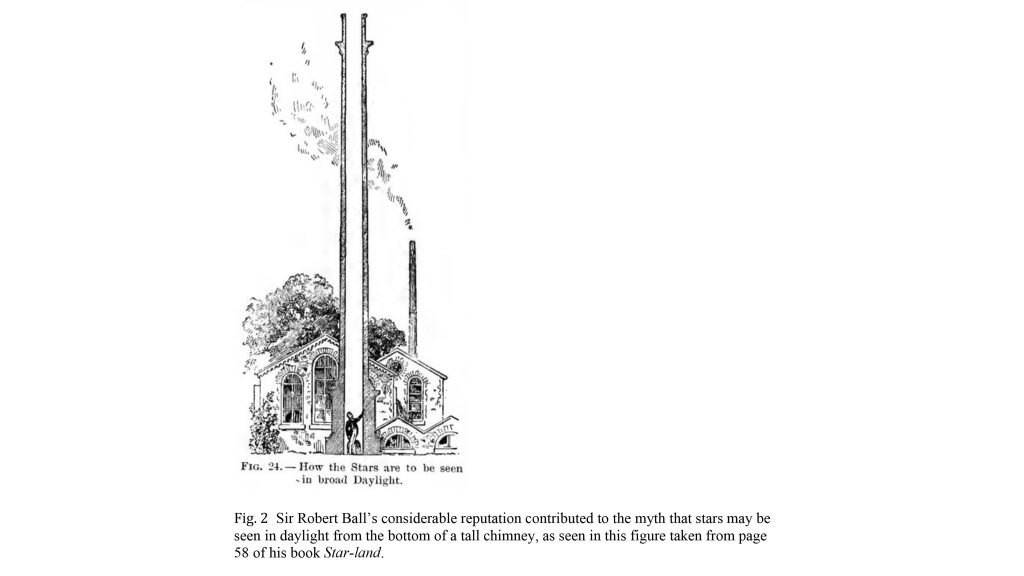From the Journal: The Physics Teacher
WASHINGTON, December 22, 2021 — James Joyce’s book “Ulysses” is widely considered a 20th-century literary masterpiece. It also contains a surprising amount of 19th-century classical physics, according to Harry Manos, faculty member at Los Angeles City College.
“Ulysses” chronicles the ordinary life of the protagonist Leopold Bloom over a single day in 1904. In The Physics Teacher, by AIP Publishing, Manos reveals several connections that have not been analyzed before in the Joycean literature between classic physics prevalent during that time and various passages of the book.
“‘Ulysses’ exemplifies what physics students and teachers should realize — namely, physics and literature are not mutually exclusive,” Manos said.
Manos shows how Joyce uses the optics of concave and convex mirrors to metaphorically parallel “Ulysses” with Homer’s “Odyssey,” and how Joyce uses physics to show Bloom’s strengths and weaknesses in science.

Bloom gets it right when he sees rainbow colors in a water spray and thinks, “Red rays are longest.” But Bloom is led into misconception when he reads the book “Star-land,” by Sir Robert Ball, the Royal Astronomer of Ireland at Dunsink Observatory, who promulgated the myth that stars could be seen in daylight from a deep mineshaft or up a tall chimney.
Bloom thinks about the science of heat transfer through convection, conduction, and radiation while boiling water for tea. He notes radiant heat from the sun is “transmitted through omnipresent luminiferous diathermanous ether.”
“Bloom’s thoughts are consistent with the ether theory and the latest 19th-century theories of radiant heat, much of which was disproved a short time after the novel’s publication,” Manos said.
After eating a sandwich and a salad, Bloom imagines how he could see the spinach stuck between his teeth with dental X-rays. Wilhelm Röntgen discovered X-rays in 1895, when he observed a green glow caused by fluorescence from barium platinocyanide on a distant screen. Spinach is transparent to X-rays and would not be detectable, but Bloom thinks the spinach is detectable, because it is green.
Manos also explores the term “sunphone,” found in Joyce’s handwritten notes and an early draft of “Ulysses.” As with all Joyce’s handwritten notes, there are no sources for his ideas, but according to Manos, the sunphone resembles the photophone, an 1880 invention by Alexander Graham Bell and Charles Sumner Tainter. The photophone was the first wireless telephone that transmitted voice messages over a modulated beam of sunlight.
“Knowing physics can enhance everyone’s understanding of this novel and enrich its entertainment value,” Manos said.
###
For more information:
Larry Frum
media@aip.org
301-209-3090
Article Title
Physics in James Joyce's 'Ulysses'
Authors
Harry Manos
Author Affiliations
Los Angeles City College
The Physics Teacher
ABOUT THE JOURNAL
Dedicated to the strengthening of the teaching of introductory physics at all levels, The Physics Teacher includes tutorial papers, articles on pedagogy, current research, and news in physics, as well as history, philosophy, and biography. Notes cover classroom techniques, and columns feature demonstration apparatus and book and film reviews. See https://pubs.aip.org/aapt/pte.
ABOUT AAPT
AAPT is an international organization for physics educators, physicists, and industrial scientists with members worldwide. Dedicated to enhancing the understanding and appreciation of physics through teaching, AAPT provides awards, publications, and programs that encourage teaching practical application of physics principles, support continuing professional development, and reward excellence in physics education. AAPT was founded in 1930 and is headquartered in the American Center for Physics in College Park, Maryland.
